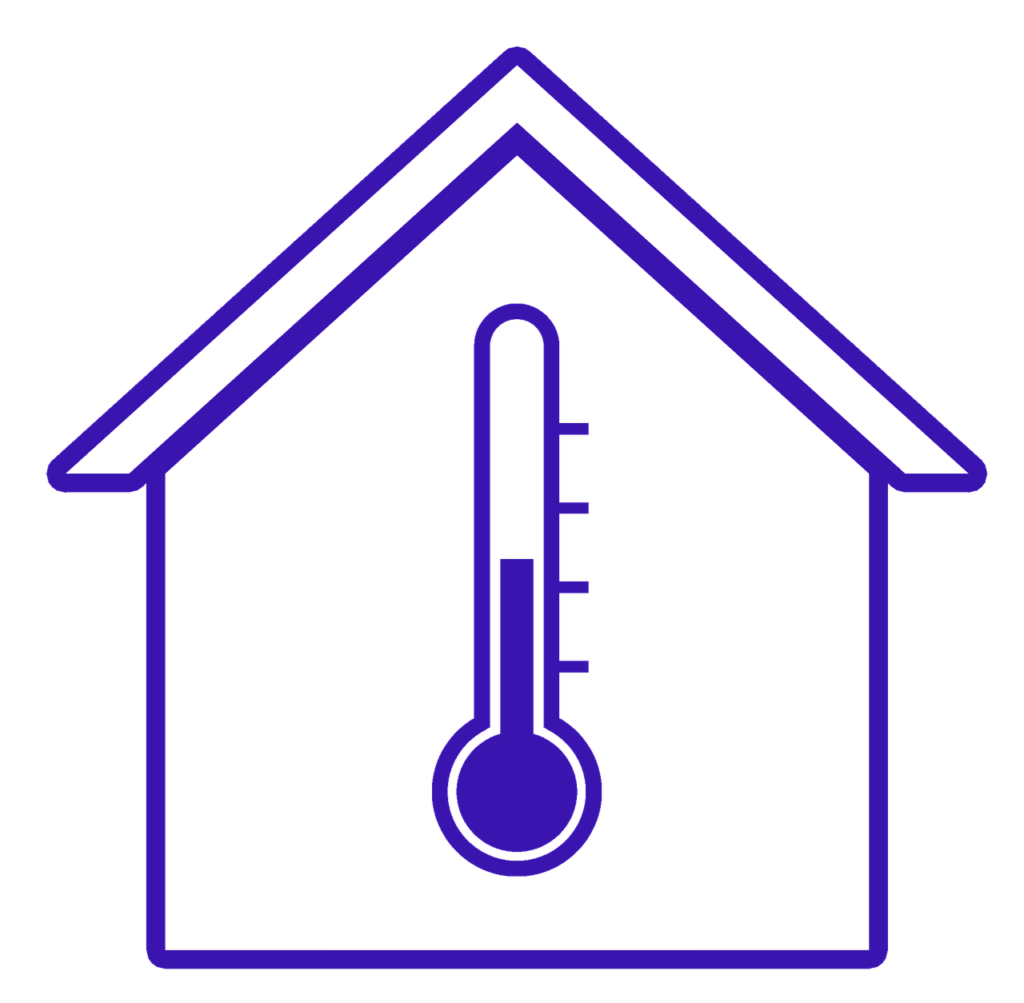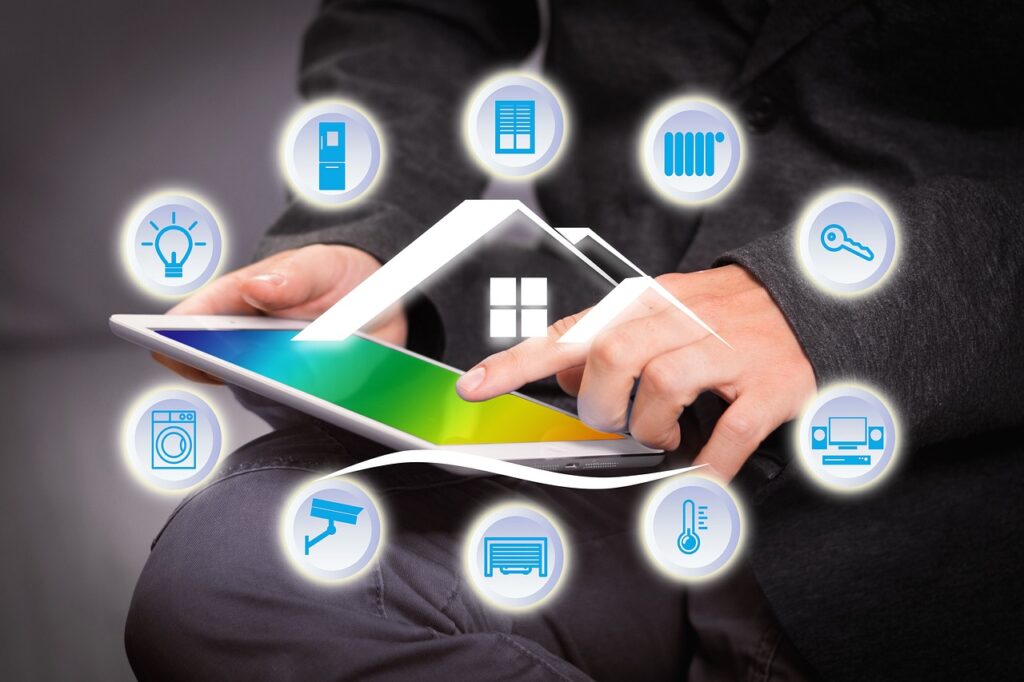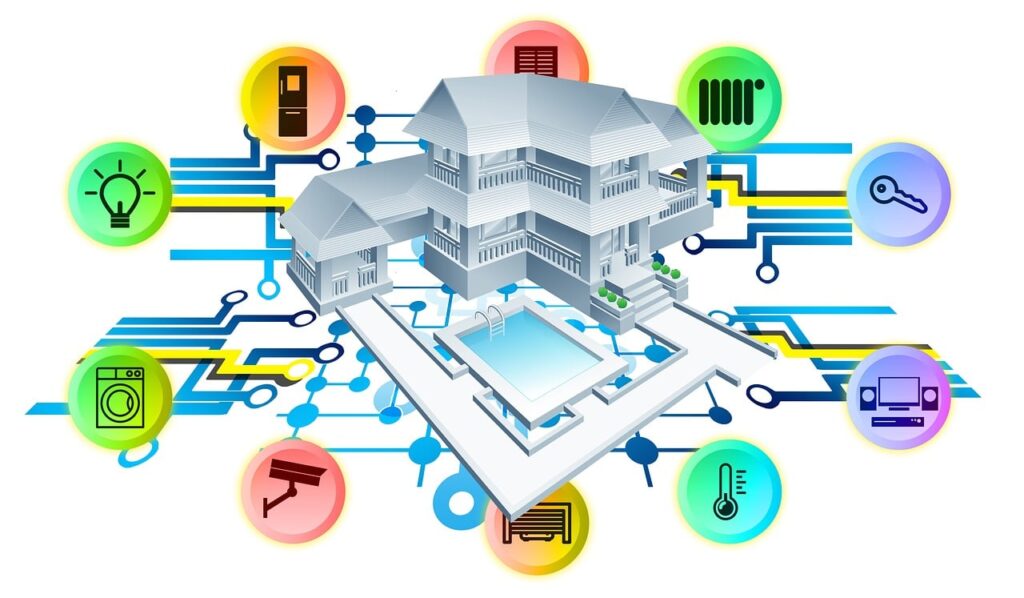
Have you ever wondered if it’s possible to create personalized automation routines for your smart appliances? Well, the good news is that you can! With the advancement of technology, it’s now easier than ever to tailor your smart devices to meet your specific needs and preferences. From setting up a morning routine that brews your coffee, adjusts the thermostat, and turns on your favorite news podcast, to creating a bedtime routine that dims the lights, locks the doors, and plays soothing music, the possibilities are endless. So, say goodbye to the hassle of manually controlling your appliances and say hello to a more convenient and customized way of living with your smart appliances!
Benefits of Creating Custom Automation Routines
Enhanced Convenience
Creating custom automation routines for your smart appliances allows you to enhance convenience in your daily life. With automation, you can automate repetitive tasks and eliminate the need for manual control of your appliances. Imagine waking up in the morning and having your coffee maker automatically start brewing a fresh cup of coffee. Or coming home after a long day at work to a perfectly lit and cozy living room. By programming your appliances to perform certain tasks at specific times or triggered by specific events, you can simplify your daily routines and save precious time.
Personalized Control
One of the key benefits of custom automation routines is the ability to personalize control over your smart appliances. With a compatible automation platform, you can set up unique routines that align with your specific preferences and lifestyle. Want your smart lights to gradually dim before bedtime? You can create a routine for that. Prefer your smart thermostat to adjust the temperature based on your schedule? You can customize it to do so. By tailoring your automation routines to your needs, you can enjoy a more personalized and convenient smart home experience.
Improved Efficiency
Custom automation routines can greatly improve the efficiency of your smart appliances. By automating certain tasks, you can ensure that they are performed at optimal times and in the most energy-efficient way. For example, you can program your smart dishwasher to run during off-peak hours when energy costs are lower. You can also have your smart blinds adjust automatically based on the amount of sunlight entering your home, helping to regulate temperature and reduce the need for excessive air conditioning or heating. These small efficiency gains can add up over time, resulting in energy and cost savings.
Understanding Smart Appliances
Definition
Smart appliances are household appliances that are equipped with advanced technology and connectivity features, allowing them to perform tasks beyond their basic functions. These appliances can be controlled remotely through a smartphone or a compatible automation platform, and they often have the ability to communicate with other devices in your smart home ecosystem. With their intelligent capabilities, smart appliances can enhance convenience, energy efficiency, and overall automation within your home.
Types of Smart Appliances
There is a wide range of smart appliances available in the market today, catering to various needs and preferences. Some popular types of smart appliances include:
- Smart thermostats: These devices allow you to control and schedule the temperature of your home remotely. They can learn your preferences over time and adjust settings accordingly, optimizing energy usage.
- Smart lighting: With smart lighting systems, you can remotely turn on, off, or dim your lights, as well as program them to turn on or off at specific times or in response to specific events.
- Smart security systems: These include smart locks, video doorbells, and cameras that offer enhanced security features such as remote monitoring, motion detection, and real-time alerts.
- Smart kitchen appliances: From smart refrigerators to smart ovens and coffee makers, these appliances offer features such as remote control, recipe suggestions, and the ability to monitor and adjust settings from anywhere.
- Smart entertainment systems: This category includes smart TVs, sound systems, and streaming devices that can be controlled and integrated with other smart devices for seamless entertainment experiences.
How They Communicate
Smart appliances communicate with other devices and platforms through various connectivity technologies. The most common communication methods include:
- Wi-Fi: Many smart appliances connect to your home network via Wi-Fi, allowing for seamless control and integration with other devices within your smart home ecosystem.
- Bluetooth: Some smart appliances utilize Bluetooth technology to establish connections with compatible smartphones or other devices, enabling remote control and personalized settings.
- Zigbee and Z-Wave: These are wireless communication protocols commonly used in home automation systems. Smart appliances equipped with Zigbee or Z-Wave technology can communicate with other devices within the same network, even if they are not connected to Wi-Fi.

How Custom Automation Routines Work
Defining Automation Routines
Automation routines are sets of instructions or actions that you can program your smart appliances to follow. These routines dictate what tasks the appliances should perform and when they should be executed. For example, you can create a routine that turns on your smart lights, adjusts the temperature, and starts playing your favorite music when you arrive home. Automating these tasks not only saves you time but also creates a seamless and personalized smart home experience.
Programming Options
When it comes to programming custom automation routines, there are several options available depending on the automation platform you choose. Most automation platforms provide user-friendly interfaces that allow you to create routines through simple drag-and-drop or point-and-click methods. You can typically specify the actions you want your appliances to perform, set the triggers or conditions for the routines to activate, and define the timing or sequence of the actions. Some advanced automation platforms even offer options for conditional programming, where routines can be triggered based on specific criteria, such as time of day, sensor readings, or location.
Integration with Other Devices
Custom automation routines can be integrated with other devices and platforms within your smart home system. This allows for a seamless and cohesive operation of all your smart devices. For example, you can create a routine that turns off all the lights, locks the doors, and sets the security system when you leave home. By integrating your smart appliances, you can create powerful automation scenarios that enhance both convenience and security.
Compatibility with Smart Home Systems
Connectivity Standards
To ensure compatibility and interoperability between your smart appliances and your chosen automation platform, it is important to consider the connectivity standards supported by both. The most commonly used connectivity standards in the smart home industry include Wi-Fi, Bluetooth, Zigbee, and Z-Wave. Make sure that your smart appliances and automation platform are compatible with the same connectivity standard to ensure smooth communication and operation.
Supported Platforms
Different automation platforms offer varying levels of compatibility with smart appliances. Some platforms, such as Google Home, Amazon Alexa, and Apple HomeKit, have extensive support for a wide range of smart appliances from various manufacturers. These platforms often provide dedicated apps or hubs that act as a central control point for your devices. Before choosing an automation platform, it is essential to research and ensure that it supports the specific smart appliances you own or plan to purchase.

Step-by-Step Guide to Creating Custom Automation Routines
Step 1: Assess Your Needs
Before diving into creating custom automation routines, take some time to assess your needs and identify areas where automation can be beneficial. Think about your daily routines and tasks that can be automated to enhance convenience and efficiency. Consider the smart appliances you already have or plan to purchase, and envision how they can be programmed to align with your specific preferences.
Step 2: Choose a Compatible Automation Platform
Research and select an automation platform that is compatible with your smart appliances and meets your requirements. Consider factors such as ease of use, supported connectivity standards, and integration capabilities with other devices or platforms. Popular automation platforms like Google Home, Amazon Alexa, and Apple HomeKit offer a wide range of compatibility and features, making them great choices for creating custom automation routines.
Step 3: Set Up and Connect Your Smart Appliances
Follow the manufacturer’s instructions to set up and connect your smart appliances to your chosen automation platform. This typically involves installing any necessary apps, connecting the appliances to your home network or hub, and registering them with the automation platform. Ensure that all your smart appliances are successfully connected and accessible through the automation platform before moving on to the next step.
Step 4: Define and Program Automation Routines
Using the interface provided by your chosen automation platform, define and program your custom automation routines. Start by selecting the desired actions or tasks you want your smart appliances to perform. This can include turning on or off lights, adjusting temperature settings, activating security systems, or any other compatible actions. Next, set the triggers or conditions that should activate the routines, such as specific times, sensor readings, or manual inputs. Lastly, specify the timing or sequence of the actions to ensure that they are executed in the desired order.
Examples of Custom Automation Routines
Wake-Up Routine
A common example of a custom automation routine is a wake-up routine. You can program your smart blinds to gradually open, your smart lights to slowly brighten, and your favorite playlist to start playing, all at a specific time in the morning. This routine can help you wake up gently and start your day off on the right foot.
Leaving Home Routine
Another useful custom automation routine is a leaving home routine. With this routine, you can ensure that all your appliances and systems are properly turned off or adjusted when you leave home. For example, your smart lights can be programmed to turn off, your smart thermostat can be set to an energy-saving mode, and your security system can be armed, all with a single command or trigger.
Bedtime Routine
A bedtime routine can create a relaxing and comfortable environment before you sleep. You can program your smart lights to dim, your smart thermostat to lower the temperature, and your smart blinds to close, preparing your bedroom for a good night’s rest. This routine can be triggered either at a specific time or by a voice command, letting you easily transition from your evening activities to a peaceful sleep.

Recommended Automation Platforms
Google Home
Google Home is a popular automation platform that offers extensive compatibility with a wide range of smart appliances. With Google Home, you can create custom automation routines using the Google Home app or through voice commands using the Google Assistant. Google Home also integrates with other Google services, allowing for seamless control and automation within your smart home ecosystem.
Amazon Alexa
Amazon Alexa, powered by Amazon’s Echo devices, is another highly recommended automation platform. Alexa offers a user-friendly interface for creating custom automation routines, known as “Routines”. You can easily define actions, triggers, and timing using the Alexa app or through voice commands. Amazon Alexa supports a large number of smart appliances and can also connect with other smart home devices for full integration.
Apple HomeKit
For Apple users, Apple HomeKit provides a reliable and secure automation platform. With the Home app on iOS devices, you can create custom automation routines using the intuitive interface. HomeKit supports a wide range of smart appliances, and its seamless integration with Siri allows for voice control and hands-free operation of your devices. Apple HomeKit also offers advanced security features, ensuring data privacy and encryption.
Tips for Successful Custom Automation Routines
Start Simple and Expand
When creating custom automation routines, it is recommended to start with simple routines and gradually expand as you become more familiar with the capabilities of your smart appliances and automation platform. Starting simple allows you to understand the process, troubleshoot any issues, and refine the routines according to your preferences. Once you are comfortable, you can add more complexity and creativity to your automation routines.
Consider Energy Efficiency
When programming your custom automation routines, consider energy efficiency as one of the key factors. Optimize your routines to minimize energy consumption by scheduling tasks during off-peak hours, utilizing motion sensors to turn off lights when a room is unoccupied, and adjusting temperature settings based on occupancy or weather conditions. By optimizing energy usage, you can reduce your environmental footprint and save on energy bills.
Test and Fine-Tune
After setting up your custom automation routines, it is important to test and fine-tune them to ensure they work as intended. Monitor the routines closely during the initial stages to identify any issues or areas for improvement. Make adjustments to the timing, trigger conditions, or actions as needed to achieve the desired results. Regularly reviewing and fine-tuning your routines will help you maintain an efficient and seamless automation experience.
Potential Challenges and Troubleshooting
Interference and Connectivity Issues
One potential challenge when creating custom automation routines is interference or connectivity issues. Poor Wi-Fi signal strength or interference from other devices can disrupt communication between your smart appliances and the automation platform. To mitigate such issues, ensure that your Wi-Fi network is stable and strong, and consider using Wi-Fi extenders or mesh systems to enhance coverage throughout your home. Additionally, avoid placing appliances or devices that may cause interference in close proximity to each other.
Incompatibility with Appliances
Another challenge can arise if your smart appliances are not fully compatible with your chosen automation platform. Some older or less commonly supported appliances may not offer the necessary connectivity or functionality to be integrated into custom automation routines. In such cases, you may need to consider alternative options or upgrade to smart appliances that are compatible with your chosen platform.
Troubleshooting Tips
If you encounter any issues with your custom automation routines, there are several troubleshooting steps you can take. First, ensure that all your smart appliances are connected to the appropriate network or hub and that they have the latest firmware updates installed. Restarting the devices or reconfiguring the routines can often resolve minor connectivity or functionality issues. If problems persist, consult the user manuals or contact the manufacturers’ support for further assistance.
Future Possibilities for Custom Automation Routines
Artificial Intelligence Integration
The future of custom automation routines holds great potential for integration with artificial intelligence (AI). As AI technology continues to advance, it can play a more significant role in analyzing and predicting our needs and behaviors. With AI integration, smart appliances can learn from our routines, preferences, and even external data sources to enhance automation and anticipate our needs before we even realize them.
Voice Recognition Technology
Voice recognition technology is already being widely used for controlling smart devices, and its integration with custom automation routines will continue to improve. As voice recognition technology becomes more accurate and capable, it can enable seamless and intuitive control of our smart appliances through natural language commands. This advancement will further enhance the convenience and hands-free operation of our automation routines.
Advanced Machine Learning Algorithms
As machine learning algorithms become more sophisticated, they can contribute to the optimization and refinement of custom automation routines. Advanced algorithms can analyze vast amounts of data collected from smart appliances, user behavior, and external factors to identify patterns, make predictions, and suggest improvements to existing automation routines. This iterative learning process can lead to even more efficient and personalized automation experiences.
In conclusion, creating custom automation routines for your smart appliances offers numerous benefits, including enhanced convenience, personalized control, and improved efficiency. By understanding how smart appliances work, selecting compatible automation platforms, and following a step-by-step guide, you can successfully create and program routines that align with your needs and preferences. With recommended automation platforms like Google Home, Amazon Alexa, and Apple HomeKit, you can easily integrate and control your smart appliances. By following tips for successful automation routines and troubleshooting any potential challenges, you can enjoy a seamless and optimized smart home experience. The future holds exciting possibilities with the integration of artificial intelligence, voice recognition technology, and advanced machine learning algorithms, further enhancing the capabilities and convenience of custom automation routines. So go ahead, explore the world of custom automation routines, and enjoy the benefits of a smart home tailored to your needs.





